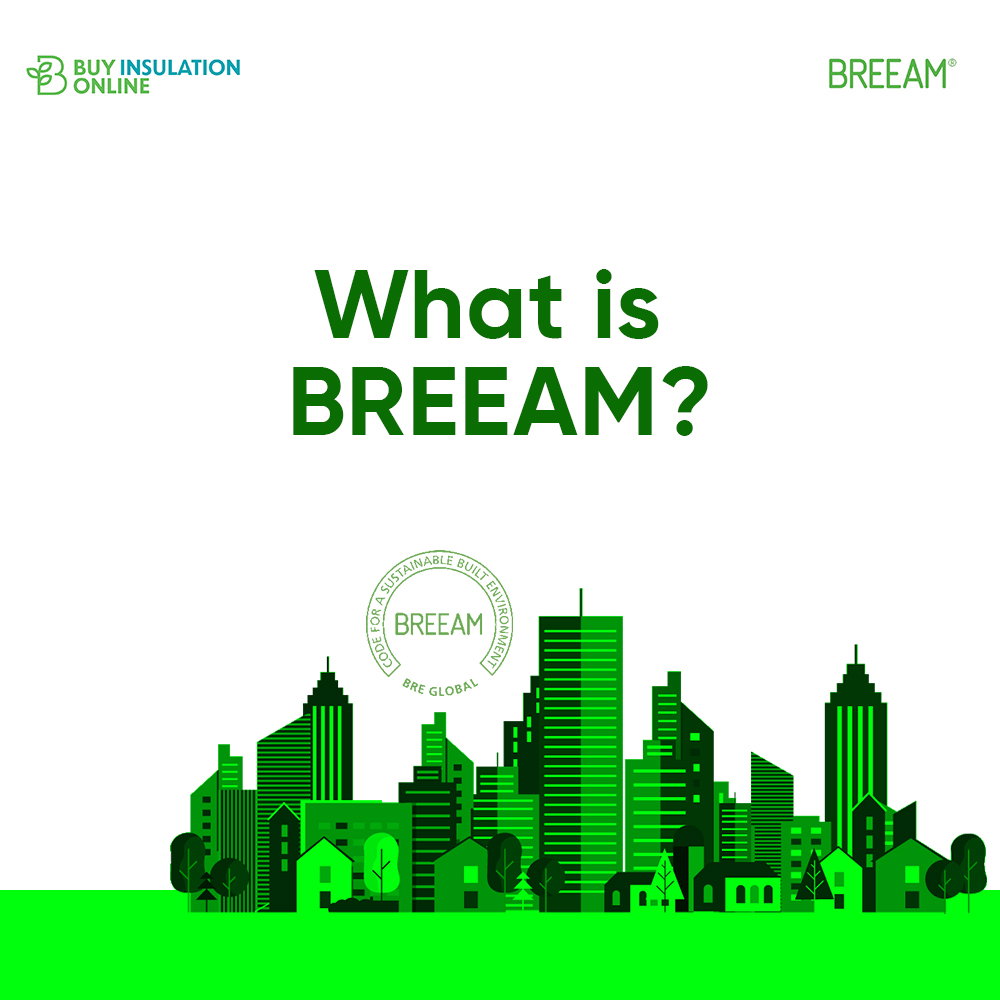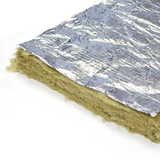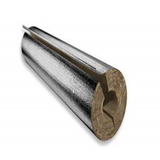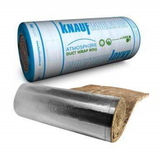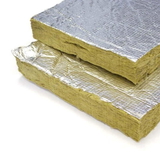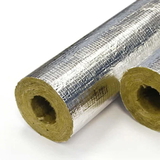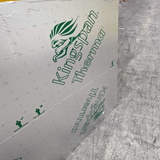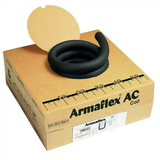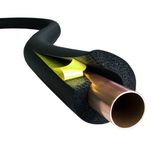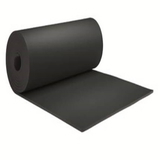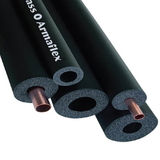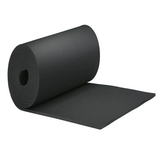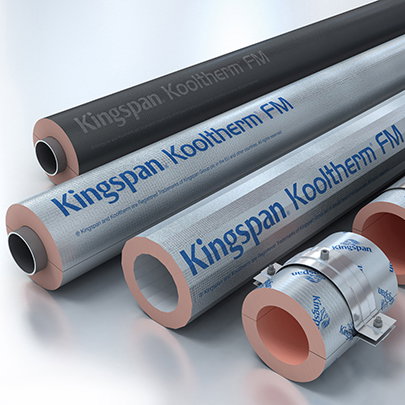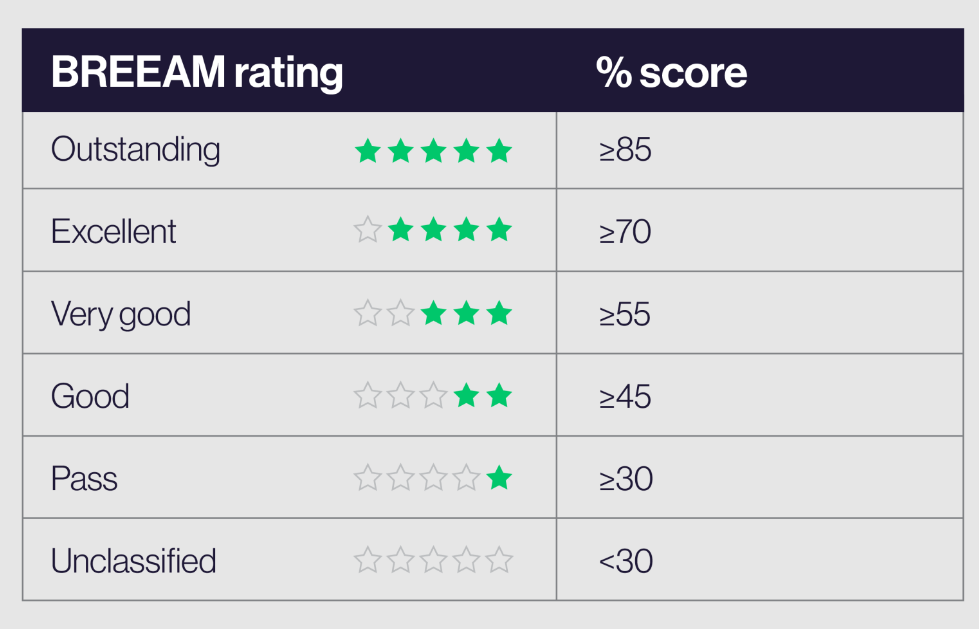- Blogs
- A Guide to BREEAM, Pipe and Duct Insulation: UK Standards and Best Practices
A Guide to BREEAM, Pipe and Duct Insulation: UK Standards and Best Practices
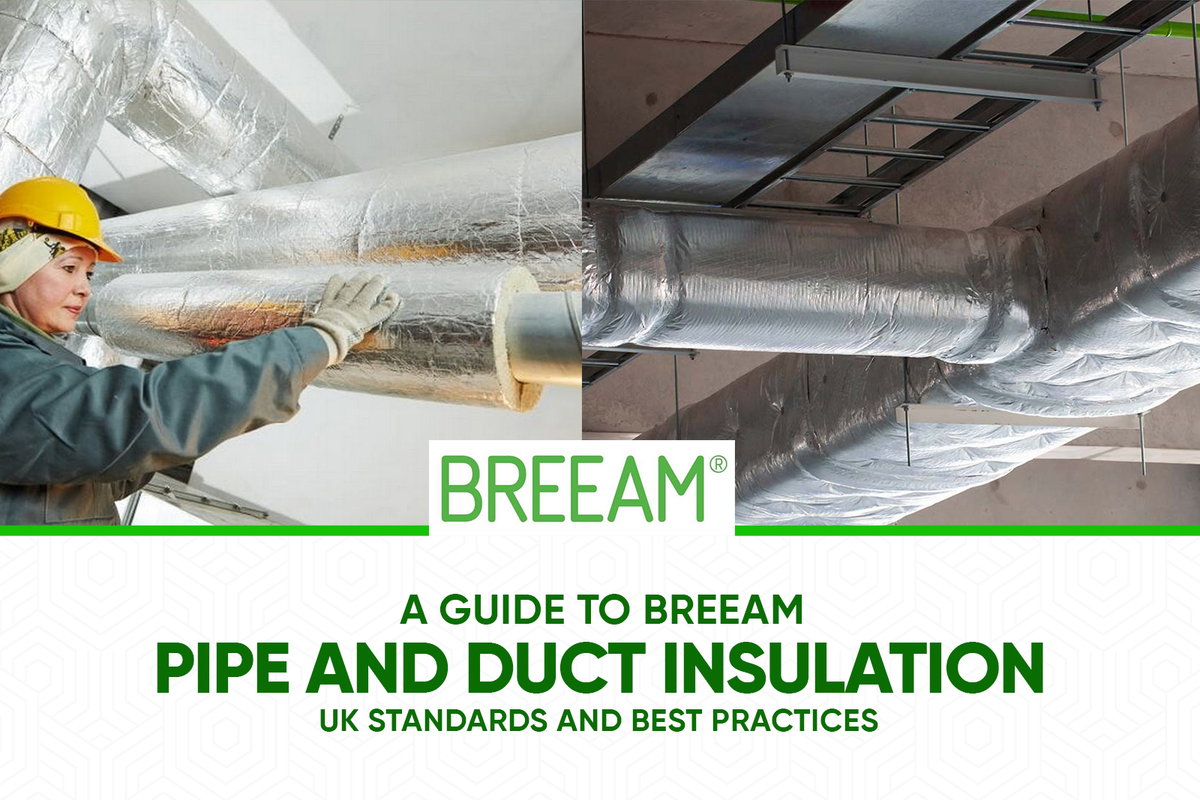
1. Introduction: The Role of Mechanical Insulation in Sustainable UK Construction
In the UK construction industry, the focus on building performance, energy efficiency, and overall sustainability has become a central pillar of modern design and development. While the thermal performance of the main building envelope—walls, roofs, and floors—is a well-understood and highly regulated area, the contribution of building services to a building's energy profile is equally significant. The insulation of mechanical systems, specifically pipework and ductwork, represents a critical discipline for conserving energy and meeting rigorous sustainability targets.
The Building Research Establishment Environmental Assessment Method (BREEAM) stands as the UK's foremost and internationally recognized framework for assessing, rating, and certifying the sustainability of buildings. Launched in 1990, BREEAM provides a holistic methodology to evaluate a building's performance across its entire lifecycle, from design and construction through to operation and refurbishment.
Within this comprehensive assessment, the specification of pipe and duct insulation is a key consideration. Its primary function is to minimize unwanted heat loss from heating and hot water systems and to prevent unnecessary heat gain to chilled water and cooling system pipework and ductwork. This function directly translates into reduced energy consumption, lower operational costs, and decreased carbon emissions, all of which are fundamental objectives of a BREEAM assessment. The selection of insulation is not merely a matter of regulatory compliance; it is a strategic decision that can influence a project's BREEAM score across several categories, impacting everything from energy performance to occupant health.
TLDR
This report provides a detailed guide for UK construction professionals on the relationship between the BREEAM sustainability assessment and the specification of pipe and duct insulation. BREEAM (Building Research Establishment Environmental Assessment Method) is the UK's leading framework for evaluating a building's environmental performance. Correctly specified and installed pipe and duct insulation is a critical component for achieving a high BREEAM rating, contributing credits across multiple categories.
The primary contribution is to the Energy category, where high-performance insulation minimises heat loss or gain from HVAC and hot water systems, directly reducing energy consumption and carbon emissions. Insulation also plays a role in the Materials category, where products with high Green Guide ratings (A+ or A) and from manufacturers with certified Environmental Management Systems (like ISO 14001) are rewarded. Furthermore, it impacts the Health and Wellbeing category by using low-VOC (Volatile Organic Compound) materials to improve indoor air quality and by providing acoustic insulation to reduce noise from building services.
Key materials used in the UK include phenolic foam, known for its superior thermal performance; mineral wool (stone and glass), valued for its non-combustibility and acoustic properties; and flexible elastomeric foams, which offer excellent moisture resistance for condensation control.
Specification is governed by UK Building Regulations, particularly Part L (Conservation of Fuel and Power), which mandates insulation to conserve energy. This regulation refers to BS 5422:2023, the British Standard that provides the method for calculating the required insulation thickness based on factors like pipe size, system temperature, and the material's thermal conductivity.
Finally, the designed performance of any insulation material is only achieved through correct installation. Best practices, such as ensuring a continuous vapour barrier, properly sealing all joints, and using insulated pipe supports to prevent thermal bridging, are essential for compliance and real-world effectiveness.
2. An Overview of BREEAM for Building Professionals
For architects, engineers, and contractors operating in the UK's built environment, a working knowledge of BREEAM is essential. It is not a prescriptive building code but a performance-based scoring system that encourages innovation and resource efficiency. This structure gives project teams the flexibility to choose how they meet sustainability targets, making the contribution of individual building components, such as insulation, a vital part of the overall strategy.
2.1 What is BREEAM? ![]()
BREEAM, an acronym for the Building Research Establishment Environmental Assessment Method, is a science-based suite of validation and certification schemes for a sustainable built environment. Developed by the UK's Building Research Establishment (BRE), it has been used to certify over half a million buildings and is applied in more than 85 countries, making it the world's longest-established method of its kind.
The framework is designed to be applied throughout a building's lifecycle. Schemes such as BREEAM New Construction are used during the design and build phases, while BREEAM In-Use allows for the assessment of existing, operational buildings. This comprehensive approach helps developers, designers, and building managers to measure and improve performance at every stage.
2.2 The Assessment Categories and Scoring System
BREEAM evaluates a building's performance against a set of ten key categories, each addressing a different aspect of sustainability. These categories, which are weighted according to their environmental importance, are: Energy, which assesses operational energy use and carbon dioxide emissions; Health and Wellbeing, focusing on occupant comfort and safety through factors like air quality and acoustic performance; Materials, evaluating the lifecycle impact of construction products; Management, which encourages sustainable practices throughout the project lifecycle; Water, aiming to reduce consumption; Waste, focusing on minimisation and recycling; Land Use and Ecology, seeking to protect and enhance biodiversity; Pollution, addressing mitigation of air, water, and noise pollution; Transport, assessing access to sustainable options; and Innovation, which rewards solutions that go beyond standard requirements.
Assessments are conducted by independent, licensed BREEAM assessors who verify the evidence provided by the project team. The process typically involves two stages: a design stage assessment leading to an interim certificate, and a post-construction assessment resulting in the final, certified rating.
2.3 Understanding the BREEAM Ratings
Upon completion of the post-construction assessment, a building is awarded a percentage score which corresponds to a specific BREEAM rating. This rating provides a clear, comparable benchmark of its sustainability credentials. The ratings are OUTSTANDING for a score above 85%, EXCELLENT for over 70%, VERY GOOD for over 55%, GOOD for over 45%, and PASS for over 30%. A score below 30% is considered UNCLASSIFIED.
A rating of 'Good' or higher indicates performance that exceeds typical UK standards for new non-domestic buildings. Many public sector projects, under the UK Government's Construction Strategy, are required to aim for an 'Excellent' rating, making the accumulation of credits in every possible area a priority for project teams.
3. How Pipe and Duct Insulation Influences BREEAM Credits
The specification of pipe and duct insulation is a decision with far-reaching consequences for a project's BREEAM score. A single product choice can have a cascading effect, delivering credits across multiple, seemingly disconnected, assessment categories. This makes technical insulation a uniquely efficient tool for project teams looking to achieve a high rating. The most significant contributions are made in the Energy, Materials, and Health and Wellbeing categories.
3.1 Energy (Ene) - The Primary Contribution
The Energy category is typically the most heavily weighted section in a BREEAM assessment, focusing on the reduction of operational energy consumption and associated carbon emissions. High-performance insulation for pipes and ducts is fundamental to achieving credits here.
By effectively minimising unwanted heat loss from hot water and heating pipework, and preventing heat gain to chilled water and air conditioning ductwork, insulation directly reduces the operational load on a building's primary plant, such as boilers and chillers. This reduction in workload translates directly into lower fuel and electricity consumption over the building's entire lifespan. For example, specifying a material with a very low thermal conductivity, such as phenolic foam, can be a key factor in meeting the stringent energy performance targets required for a BREEAM 'Excellent' rating. The less energy a system has to expend to deliver heating or cooling to its destination, the better the building's performance under the 'Ene' criteria.
3.2 Materials (Mat) - Verifying Sustainable Sourcing
The Materials category moves beyond a product's in-use performance to assess its wider environmental impact, from raw material extraction to manufacturing and disposal. Insulation can contribute credits in this category through two primary mechanisms.
The first is through Green Guide Ratings. BRE Global conducts a "cradle to grave" life cycle assessment (LCA) of construction products, resulting in a Green Guide rating from A+ (best) to E (worst). In BREEAM schemes, credits are awarded for specifying insulation products with high Green Guide ratings. Products like certain phenolic foam pipe insulations have achieved A and A+ ratings, which can contribute significantly towards the available credits in the materials section. This forces specifiers to consider the embodied environmental impact of their chosen materials, not just their operational performance.
The second mechanism is responsible sourcing. BREEAM also rewards the use of materials from manufacturers who can demonstrate a commitment to sustainable production. This is typically verified through an approved Environmental Management System (EMS), with ISO 14001 being the most common. Specifying insulation from a manufacturer with ISO 14001 certification provides evidence of responsible sourcing and can contribute to achieving credits under the relevant 'Mat' issue.
3.3 Health and Wellbeing (Hea) - Impact on Occupants
The Health and Wellbeing category assesses a building's ability to provide a comfortable, safe, and healthy internal environment for its occupants. Pipe and duct insulation makes important contributions in two key areas: indoor air quality and acoustic performance.
Under Hea 02 - Indoor Air Quality, the credit aims to minimise the concentration of indoor air pollutants, including Volatile Organic Compounds (VOCs), which can be emitted from certain building materials, adhesives, and finishes. To comply, products installed within the building's thermal envelope must meet strict VOC emission limits. BREEAM sets post-construction concentration limits for formaldehyde (not to exceed 100 micrograms per cubic metre) and Total Volatile Organic Compounds (TVOCs) (not to exceed 500 micrograms per cubic metre). Specifying insulation products, along with their associated adhesives and sealants, that are certified as low-VOC or zero-VOC is therefore essential. Third-party schemes such as GREENGUARD Gold are recognised by BREEAM as evidence of compliance, as they test products for emissions of over 360 different chemicals.
The second area is Hea 05 - Acoustic Performance. This credit is designed to ensure that a building provides an appropriate acoustic environment, free from disruptive noise. Building services, particularly HVAC systems, are a significant source of noise within a building, generated by airflow in ducts and fluid flow in pipes. Applying acoustic insulation to ductwork and pipework helps to dampen this noise and control vibration, contributing to the achievement of the indoor ambient noise levels required by the Hea 05 criteria.
3.4 Pollution (Pol) - Mitigating External Noise
The Pollution category includes the Pol 05 credit, which assesses noise from external building services plant and its impact on nearby noise-sensitive properties. While the primary focus is on the noise output of major plant items like chillers and air handling units, ensuring that associated ductwork is properly insulated can help reduce noise breakout and contribute to the overall acoustic strategy for the site.
4. A Specifier's Guide to Pipe and Duct Insulation Materials
The choice of insulation material is a critical decision that balances thermal performance, fire safety, moisture resistance, and cost. In the UK, three main types of material dominate the specification for building services applications: phenolic foam, mineral wool, and flexible elastomeric foam.
4.1 Phenolic Foam Insulation ![]()
Phenolic foam is a rigid thermoset insulation with a very high closed-cell content and a fine cell structure. Its defining characteristic is its exceptional thermal performance. With a thermal conductivity (lambda value) as low as 0.025 W/m.K, it is one of the most thermally efficient insulation materials commonly available. This efficiency means that specified thermal performance can be achieved with a thinner layer of insulation compared to other materials, which is a significant advantage in congested service voids or where space is at a premium.
Phenolic insulation is suitable for a wide temperature range, typically from -50 deg C to +110 deg C, making it appropriate for insulating chilled water, cold water, LTHW (low-temperature hot water), and heating pipework. In terms of fire performance, as a thermoset material, it chars rather than melts when exposed to flame. Products for pipe and duct applications typically achieve a Euroclass reaction to fire rating of BL-s1,d0 or B-s1,d0, indicating limited contribution to fire, very low smoke production, and no flaming droplets.
4.2 Mineral Wool Insulation (Stone and Glass Wool)
Mineral wool is a fibrous insulation material manufactured from either molten volcanic rock (stone wool) or recycled glass and sand (glass wool). Its primary advantage is its fire performance. Mineral wool is non-combustible and can withstand temperatures in excess of 1,000 deg C. It typically achieves the highest possible Euroclass reaction to fire classifications of A1 (non-combustible) or A2-s1,d0 (limited combustibility). This makes it the material of choice for applications where fire safety is the highest priority.
In addition to its fire resilience, mineral wool possesses excellent acoustic absorption properties. The fibrous structure is effective at dampening sound and vibration, making it a common specification for insulating ductwork to reduce HVAC system noise. Its typical service temperature range for building services applications is from 0 deg C to 250 deg C.
4.3 Flexible Elastomeric Foam (FEF) Insulation
Flexible elastomeric foam (FEF) is a closed-cell synthetic rubber material, commonly based on nitrile rubber (NBR) or ethylene propylene diene monomer (EPDM). Its key strength is its high resistance to water vapour transmission, which gives it a built-in vapour barrier. This property makes it extremely effective at preventing surface condensation when installed on cold and chilled water lines, thus mitigating the risk of moisture damage and corrosion under insulation (CUI).
As its name suggests, the material is highly flexible, which simplifies installation, particularly around complex arrangements of pipes, valves, and fittings. Its fire performance has improved significantly, with modern FEF products capable of achieving Euroclass ratings of B-s3,d0 or BL-s2,d0, making them suitable for a wide range of commercial applications.
Table 1: Comparative Analysis of Common Insulation Materials
|
Property |
Phenolic Foam |
Mineral Wool |
Flexible Elastomeric Foam (FEF) |
|
Thermal Conductivity (lambda) |
Excellent (e.g., 0.025 W/m.K) |
Good (e.g., 0.033 - 0.035 W/m.K) |
Good (e.g., 0.033 - 0.036 W/m.K) |
|
Typical Euroclass Fire Rating |
B-s1,d0 or BL-s1,d0 |
A1 or A2-s1,d0 |
B-s3,d0 or BL-s2,d0 |
|
Service Temperature Range |
Wide (e.g., -50 deg C to +110 deg C) |
Very Wide (e.g., 0 deg C to +250 deg C) |
Wide (e.g., -50 deg C to +110 deg C) |
|
Moisture Resistance |
Good (Closed cell, requires sealed foil vapour barrier) |
Poor (Open fibre, requires intact vapour barrier) |
Excellent (Closed cell, built-in vapour barrier) |
|
Acoustic Performance |
Limited |
Excellent |
Good |
|
Key Application Advantage |
Thermal efficiency in limited space |
Non-combustibility and fire safety |
Condensation control and flexibility |
5. Compliance and Specification: UK Regulations and Standards
The specification and installation of pipe and duct insulation in the UK are governed by a framework of legal requirements and technical standards. For any project, particularly one aiming for BREEAM certification, compliance with these is non-negotiable. The two most important documents are Building Regulations Part L and the British Standard BS 5422.
5.1 Building Regulations Part L - Conservation of Fuel and Power
Part L of the UK Building Regulations is a statutory requirement that sets the standards for energy performance and the conservation of fuel and power in buildings. The guidance is split into two volumes: Volume 1: Dwellings and Volume 2: Buildings other than dwellings.
Both volumes mandate that reasonable provision must be made to limit heat gains and losses from pipes, ducts, and vessels. For example, in non-domestic buildings, the guidance in Approved Document L, Volume 2 states that hot water pipework must be insulated both inside and outside the building unless the heat loss from it can be demonstrated as "always useful". It provides indicative tables for minimum insulation thicknesses based on pipe diameter and the thermal conductivity of the insulation material used. These regulations form the legal baseline for performance that all projects must meet.
5.2 BS 5422:2023 - The Method for Specification
BS 5422 is the key British Standard that provides the technical methodology for specifying thermal insulation for pipes, ducts, and equipment. It is the primary reference document used to demonstrate compliance with the requirements of Building Regulations Part L. The standard's purpose is to provide guidance on determining the appropriate insulation thickness needed to achieve specific objectives, such as conserving energy by controlling heat loss or gain, controlling surface condensation, preventing the freezing of pipe contents, and protecting personnel from hot surfaces.
To use the standard, a specifier must consult a series of tables. The correct table and required thickness are determined by several key parameters: the system type (e.g., heating, chilled water), the pipe or duct size, the system operating temperature, the ambient temperature, the emissivity of the outer surface, and the thermal conductivity (lambda value) of the chosen insulation product.
The 2023 revision of BS 5422 introduced several important changes. National fire classifications (like Class 0) were replaced with the European Euroclass system, and the tables were simplified. A significant change was the introduction of 'base' and 'enhanced' performance tables for energy conservation, with the more stringent 'enhanced' levels often presented as the default option for specifiers to consider.
The practical outcome of this standard is that a material with a lower thermal conductivity (better thermal performance) will require a smaller thickness to meet the same heat loss or gain limit as a material with a higher thermal conductivity. This relationship directly impacts design decisions, especially concerning space allocation for building services.
Table 2: Illustrative Insulation Thickness Comparison (BS 5422:2023, Table 15a)
This table illustrates how the choice of material affects the required thickness for a non-domestic heating service pipe (steel, 42.4 mm OD) to meet the base level heat loss limit of 12.30 W/m.
|
Insulation Material |
Thermal Conductivity (lambda) at 45 deg C mean |
Required Thickness (mm) |
|
Phenolic Foam |
0.025 W/m.K |
25 mm |
|
Mineral Wool |
0.035 W/m.K |
40 mm |
|
Flexible Elastomeric Foam |
0.034 W/m.K |
40 mm |
Note: Thicknesses are indicative and derived from manufacturer data aligned with BS 5422:2023 tables. Always consult the full standard and manufacturer's specific literature for precise calculations.
5.3 BS 5970 - The Code of Practice for Installation
While BS 5422 deals with what to specify, BS 5970:2012 is the code of practice that details how to install it. It covers essential aspects of workmanship, including surface preparation, the correct methods for fixing and securing insulation, sealing joints, and applying protective finishes. Adherence to BS 5970 is critical to ensure that the specified insulation system performs as designed.
6. Best Practices for High-Performance Insulation Installation ![]()
The theoretical performance of a high-quality insulation material can be completely undermined by poor installation. The integrity of the entire insulation system depends on meticulous attention to detail during application. A system is only as effective as its weakest point, and common failures at joints, fittings, and supports can lead to significant energy loss and condensation problems.
Surface preparation is the first step. Before any insulation is applied, the surface of the pipe or duct must be clean, dry, and free of any dust, oil, or scale. Contaminants can compromise the adhesion of tapes and adhesives and prevent the insulation from fitting snugly.
Next is ensuring a snug fit. The insulation sections must fit tightly around the pipe or duct, with no air gaps between the insulation and the surface. For flexible tube insulation, the material should be pushed onto the pipe, not stretched or pulled, as this can reduce its wall thickness and compromise performance. When installing sections on horizontal pipework, the longitudinal slit or joint should be positioned to the side (e.g., at the 3 or 9 o'clock position), not at the top where it might be affected by heat or at the bottom where it could collect moisture.
Sealing all joints is arguably the most critical step. Every joint, both longitudinal (along the length of the section) and circumferential (where two sections meet), must be completely sealed. For foil-faced products, a matching self-adhesive aluminium foil tape should be used to create a continuous thermal and vapour barrier. For non-faced products like some elastomeric foams, a compatible adhesive must be applied to both surfaces before they are joined. Any gap represents a path for heat transfer and, on cold systems, a point for condensation to form.
Insulating fittings and bends is also crucial. Pipe fittings such as elbows, tees, and valves must be insulated to the same thickness and standard as the main pipe run. This is typically achieved by fabricating insulation covers from sections of the same material. For a 90° bend, this involves cutting two pipe sections at a 45° angle to form a mitred joint, ensuring a continuous and uniform layer of insulation around the corner.
A common and serious installation error is failing to prevent thermal bridging at supports. Allowing the pipe to rest directly on a metal support bracket, with the insulation simply cut away around it, creates a thermal bridge, a direct path for heat to bypass the insulation. The correct practice, as outlined in standards like BS 5422, is to use load-bearing insulated pipe supports. These are high-density blocks of a compatible insulation material (e.g., high-density phenolic or stone wool) that sit between the pipe and the bracket, ensuring the continuity of the thermal insulation and vapour barrier across the support point.
Finally, applying protective finishes is necessary in certain locations. In areas where the insulation is exposed to weather, UV radiation, or potential mechanical damage (such as in plant rooms or outdoors), it must be protected by a suitable cladding or jacketing system.
7. The Wider Sustainability Context: Recycled Content and End-of-Life
A truly holistic assessment of a material's sustainability extends beyond its operational performance to consider its composition and what happens at the end of its service life. For insulation, this involves looking at recycled content and the practicalities of recycling.
7.1 Recycled Content
The use of recycled materials in manufacturing reduces the need for virgin raw materials, often saving significant energy and reducing the environmental impact of extraction.
Mineral wool is a strong performer in terms of recycled content. Glass mineral wool can contain up to 80% recycled glass, sourced from post-consumer glass bottles and manufacturing offcuts. Stone wool is manufactured from naturally abundant volcanic rock but also incorporates recycled material, such as slag from the steel industry and production waste, which can constitute around 35% of the final product.
For phenolic foam, as a product of a specific chemical reaction, it does not contain post-consumer recycled content in the same way as mineral wool. However, some manufacturers are able to reintroduce production waste and offcuts back into the manufacturing process, reducing overall waste. Furthermore, active research is underway, in partnership with industry, to develop viable chemical recycling processes that could break down old foam into its constituent parts for reuse, aiming to create a circular economy for these materials in the future.
7.2 Recyclability and End-of-Life
The distinction between a material being "recyclable" and it being widely "recycled" is a critical one. The existence of a practical and economically viable infrastructure for collection and reprocessing is key.
For mineral wool, in theory, it is completely recyclable and can be melted down to create new insulation products. Some manufacturers in the UK operate take-back schemes for clean, uncontaminated site offcuts. However, recycling insulation from demolition sites is more challenging due to potential contamination, and much of it still ends up in landfill.
Foams (phenolic and elastomeric) present greater recycling challenges. While chemical or mechanical recycling methods exist, they are not widely established at a commercial scale in the UK. The primary barriers are logistical; foam is lightweight and bulky, making it expensive to transport, and it is often contaminated with adhesives, tapes, or building debris. Consequently, for most foam insulation products at the end of their life, landfill or energy-from-waste incineration are the most common disposal routes.
This reality means that while specifying products for their recyclability is a forward-thinking goal, specifying products with high recycled content is currently a more direct and verifiable way to contribute to the circular economy.
8. Conclusion
The effective insulation of pipework and ductwork is an indispensable element of sustainable building design and a key contributor to achieving high BREEAM ratings. It moves beyond being a simple compliance exercise and becomes a strategic tool for architects, specifiers, and engineers. The selection of the right insulation material, specified to the correct thickness according to UK standards and installed with meticulous attention to detail, delivers a cascade of benefits that align directly with BREEAM's core objectives.
By reducing the energy demand of a building's mechanical services, high-performance insulation directly lowers operational costs and carbon emissions, satisfying the primary goals of the Energy category. By choosing products with favourable life cycle assessments and from manufacturers with certified environmental management systems, project teams can secure valuable credits in the Materials category. Furthermore, the specification of low-VOC and acoustically absorbent insulation directly creates a healthier and more comfortable indoor environment for occupants, a central tenet of the Health and Wellbeing category.
Ultimately, the integration of high-performance technical insulation into a project's design is a clear indicator of a comprehensive approach to sustainability. It reflects an understanding that true building performance is the sum of all its parts, and that even components within service voids play a vital role in delivering buildings that are not only environmentally responsible but also economically efficient and beneficial for the people who use them.
Legal Disclaimer
The information contained in this article is for general guidance and informational purposes only. It is not intended to be a substitute for professional advice. The content should not be used as a basis for specification or other decisions without consulting the relevant and current British Standards, manufacturer's technical data sheets, and seeking advice from suitably qualified professionals, such as architects, engineers, or BREEAM assessors. While every effort has been made to ensure the accuracy and completeness of the information provided, the author and publisher assume no responsibility or liability for any errors or omissions, or for any loss or damage of any kind arising from the use of, or reliance on, this content. All specifications and applications should be verified with the product manufacturer.

Samuel Hitch
Managing Director
Buy Insulation Online.
Leave A Reply
Your feedback is greatly appreciated, please comment on our content below. Your email address will not be published. Required fields are marked *






